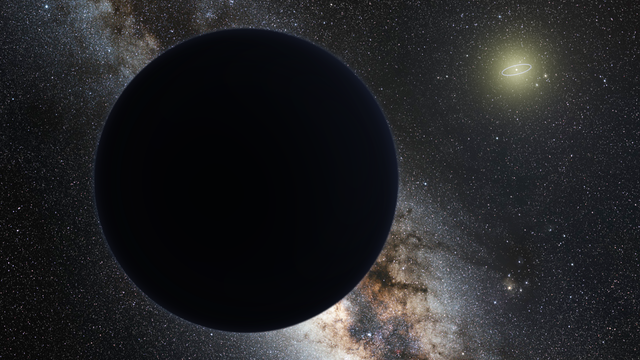A newly identified potential dwarf planet in the far reaches of our solar system could challenge the long-standing theory of a hidden ninth planet. The discovery, named 2017 OF 201, has intrigued astronomers, particularly because it had not been anticipated prior to its finding.
Sihao Cheng, the lead researcher from the Institute for Advanced Study in Princeton, expressed his excitement, stating, “We were very excited to discover 2017 OF 201 because it was not expected at all. It’s very rare to discover an object both large and with an exotic orbit.” The planet’s unusual orbit features an aphelion, or its farthest point from the sun, that exceeds 1,600 times the distance of Earth from the sun, while its perihelion—its closest approach—is about 44.5 times that distance, echoing the orbital path of Pluto.
The exploration of the solar system’s outer regions continues to reveal fascinating information. The Kuiper Belt, located beyond Neptune, contains icy bodies such as Pluto and Charon, beginning approximately 30 astronomical units (AU) from the sun and stretching out to 50 AU. NASA’s New Horizons mission is currently investigating this area. The twin Voyager spacecraft have ventured beyond the Kuiper Belt into the Scattered Disk, a region filled with icy bodies on erratic orbits influenced by gravitational interactions with Neptune and galactic forces. This area likely extends to over 1,000 AU and forms the boundary before the distant Oort Cloud, known for being the source of long-period comets. Despite extensive studies, only a handful of trans-Neptunian objects (TNOs) in this expanse have been cataloged.
With about 5,000 TNOs identified to date, the emergence of 2017 OF 201 marks a significant milestone. Presently, this celestial object resides roughly 90.5 AU from the sun but has an orbit that carries it anywhere from 4.14 billion miles (6.66 billion kilometers) to an astonishing 157 billion miles (244 billion kilometers) away from our star. Its last perihelion occurred in 1930, making its detection possible as it was nearing its closest approach.
Interestingly, this perihelion coincided with the year Clyde Tombaugh discovered Pluto at the Lowell Observatory. Nonetheless, had Tombaugh attempted to find 2017 OF 201, he likely would not have succeeded; at a magnitude of +20.1, this object is considerably fainter than Pluto.
Modern telescopic advancements have enhanced our ability to detect such distant objects. Cheng and his team identified 2017 OF 201 using data from the Dark Energy Camera Legacy Survey (DECaLS) and previous observations from the Canada–France–Hawaii Telescope, dating as far back as 2011. Based on its brightness and expected reflectivity, the researchers estimate that 2017 OF 201 has a diameter of approximately 435 miles (700 kilometers), which qualifies it as a dwarf planet, although it is less massive than Pluto.
The implications of this discovery could jeopardize the Planet Nine hypothesis proposed by astronomers in 2016, which suggests a larger, unseen planet influencing certain orbits of TNOs in a clustered manner. As noted by co-researcher Jiaxuan Li, 2017 OF 201’s trajectory does not align with this hypothetical clustered pattern.
In correspondence with Cheng, he outlined the implications of this finding for the Planet Nine theory. “Planet Nine does allow for extreme TNOs to have unclustered orbits, but those orbits are not stable,” Cheng explained. He noted that while Planet Nine may destabilize the orbit of 2017 OF 201 over approximately 100 million years, the gravitational interactions that placed it in its current orbit likely took billions of years. This suggests that 2017 OF 201 may have recently shifted into its current pathway, possibly avoiding disruption from Planet Nine.
Cheng underscores the necessity of further research into the stability of 2017 OF 201’s orbit, stating, “I think, based on analytical criteria, our object is at the boundary between stable and unstable.” He suggests that more comprehensive simulations could settle the question regarding Planet Nine.
Remarkably, it seems 2017 OF 201 might not be a lone entity in the outer solar system. Its unique orbit and visibility suggest the possibility of many similar objects, currently too distant to detect. Cheng noted, “2017 OF 201 spends only 1% of its orbital time close enough to us to be detectable,” prompting speculation about the existence of potentially hundreds of dwarf planets waiting to be uncovered.
As technology advances, our understanding of the solar system deepens. Cheng concludes, “Even though advances in telescopes have enabled us to explore distant parts of the universe, there is still a great deal to discover about our own solar system.”

